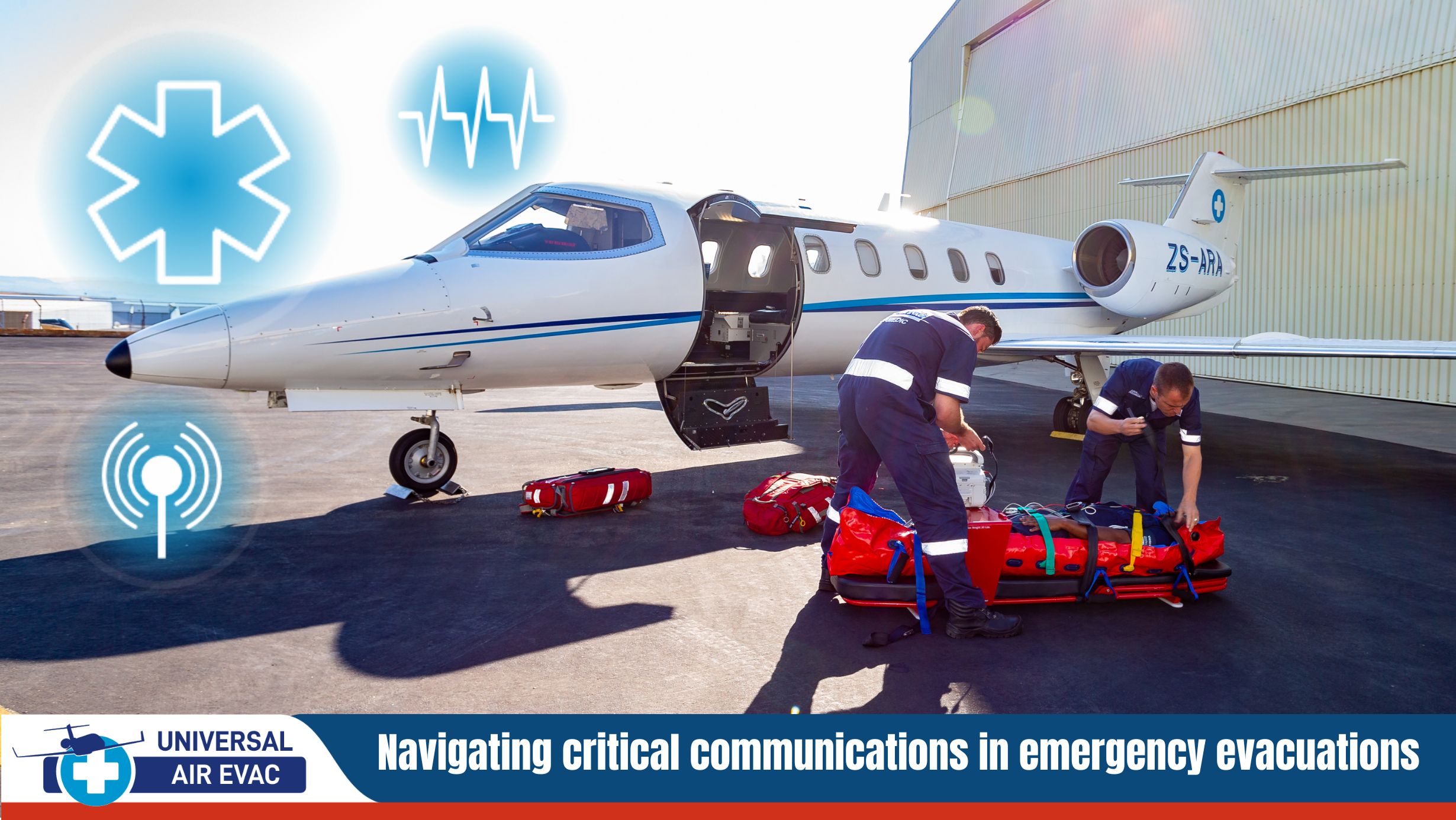Navigating Critical Communications: The Vital Link in Emergency Evacuations

In the urgent domain of life-preserving endeavours, success hinges not only on medical expertise and swift response but also on the clarity of information exchanged and the efficiency of communication channels.
In a seemingly routine evacuation along the East African Coast, a fixed-wing aircraft was dispatched to transfer a patient initially reported as stable. The patient, believed to be awaiting pickup at the referring hospital, was instead found to be in a critical condition, improperly managed, and rapidly deteriorating in an ambulance and already at the airport.
With the situation escalating rapidly on the tarmac, the medevac team sprang into action. Despite the unexpected turn of events, they swiftly intervened, deploying their expertise to stabilise the patient and initiate life-saving interventions. The team's ability to adapt to rapidly changing circumstances highlights the crucial role of preparedness and quick thinking in mitigating the impact of bad communication on patient outcomes.
The Imperativeness of Effective Communication
This stark disparity between the initial report and the actual condition of the patient underscores the critical importance of accurate communication in pre-empting challenges during medical evacuations.
This example of disparity between medical reports and actual patient conditions, unfortunately, is not uncommon in emergency medical evacuations. As we reflect on the outcomes of this specific mission, we are reminded of the profound importance of rigorous training, unwavering teamwork, and a steadfast commitment to excellence. In an environment fraught with uncertainty, where we cannot always control communication from other parties, it is in these uncertain cases where the motto 'prepare for the worst, and hope for the best' serves as a guiding light, ensuring a team prepared for anything they may find, every time.
The Breakdown of Communication and an Increased Risk
Communication Challenges in Multilingual Africa
One of the foremost challenges encountered during medical evacuations in Africa is the intricate web of language barriers that permeate the region. With diverse linguistic landscapes spanning across various countries, communication can often prove to be a formidable obstacle. In a continent where some regions predominantly speak Portuguese while others favour French, not to mention the numerous local languages and dialects, the task of conveying critical medical information becomes exponentially complex.
Compounding this issue is the involvement of third-party intermediaries who serve as conduits between the medical team and local healthcare providers. While these intermediaries play a vital role in facilitating communication, there exists an inherent risk of misinterpretation or distortion as information passes through multiple linguistic filters. Thus, vital details crucial for the success of a medical evacuation may be lost in translation, leading to misunderstandings and potentially compromising patient care.
Resource Constraints in Rural Africa
In rural and smaller towns across Africa, the landscape of healthcare resources is often marked by scarcity and inadequacy. This reality was starkly evident when the Universal Air Evac team encountered a patient arriving in an ambulance without any monitoring equipment or oxygen and with an incorrectly placed endotracheal tube. In many cases, the air ambulance team arrives equipped with more advanced medical devices than what is available on the ground, necessitating their intervention to ensure proper care.
Moreover, the scarcity of healthcare personnel in these areas compounds the challenge, with fewer staff members available to manage emergencies effectively. In some instances, the available staff may lack sufficient training to handle critical situations, further exacerbating the risk to patients. Thus, the Universal Air Evac team often finds themselves not only providing specialised medical care but also filling critical gaps in resource availability and expertise, ensuring that every patient receives the highest standard of care, regardless of their location or the limitations of the local healthcare infrastructure.
Emotional Decisions and Their Impact
In the face of dire circumstances and limited resources, families often grapple with emotional decisions in their quest to secure the best possible care for their loved ones. Such was the case when the family insisted on transporting the patient to the tarmac in a rudimentary ambulance with fewer resources, in a bid to save time. While their intentions were undoubtedly fuelled by a desire to expedite the process and increase the chances of survival, this decision inadvertently compromised the patient's stability. By the time the patient reached the aircraft and tarmac, he was in a critical condition, necessitating a rapid shift in the crew's approach from stabilisation to life-saving mode.
While it is natural for emotions to guide decision-making in such situations, it's crucial to recognise the potential risks involved. Not only did this decision increase the patient's vulnerability, but it also escalated the complexities of the mission entirely. Thus, striking a delicate balance between urgency and patient safety remains paramount, ensuring that every decision made is grounded in the best interest of the patient's well-being, even in the face of overwhelming emotions and challenging circumstances.
Overcoming Adversity
In the face of formidable challenges, the Universal Air Evac team demonstrated perseverance, ultimately succeeding in stabilising the patient and facilitating his transport to South Africa for further care. These experiences serve as invaluable lessons, reinforcing the necessity of being over-prepared for every eventuality. The team's commitment to having set medical bags and equipment ensures readiness for any scenario, mitigating the impact of resource constraints and communication barriers. Moreover, the importance of maintaining constant vigilance and taking decisive actions in the absence of reliable communication channels cannot be overstated. In some instances, the team must take matters into their own hands, directly liaising with doctors or leveraging available resources to deliver optimal care.
Despite the challenges posed by the limited crew and the need to improvise in critical situations, the team's adaptability and resourcefulness remain steadfast, exemplifying their unwavering dedication to their life-saving mission. As they continue to navigate the complexities of medical evacuations in Africa and beyond, these lessons serve as guiding principles, ensuring that every mission unfolds with precision, efficiency, and a relentless commitment to excellence.

